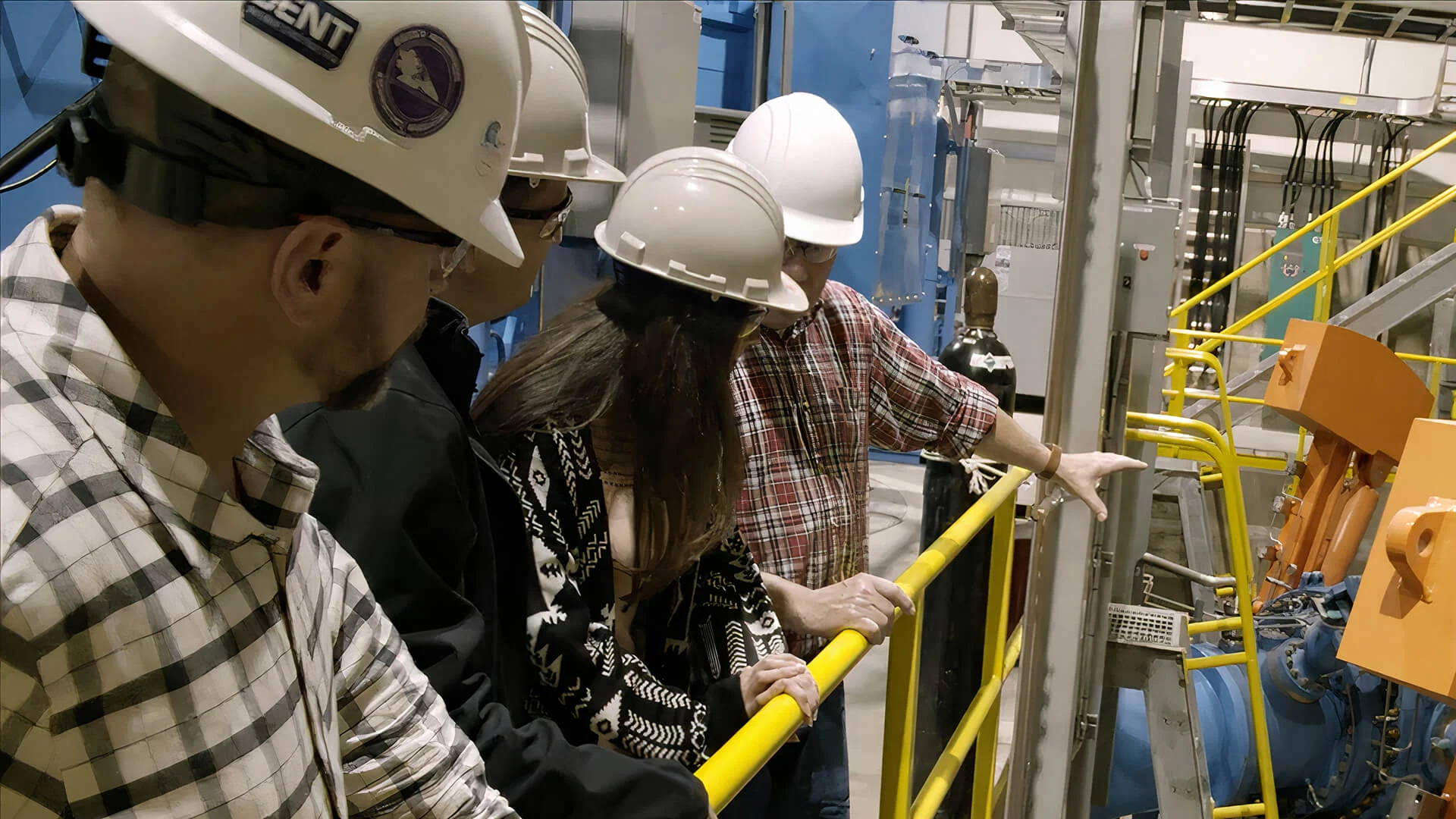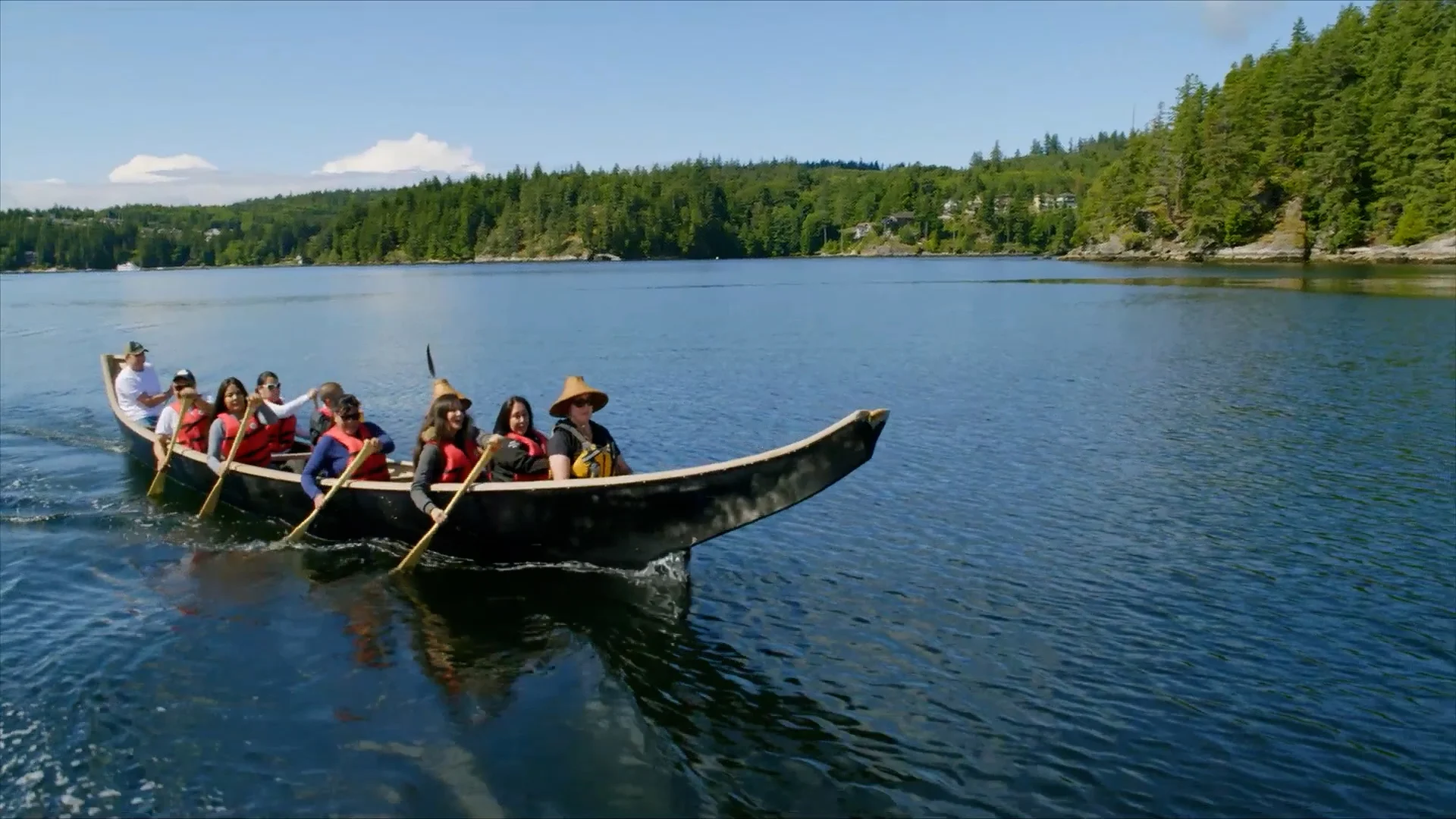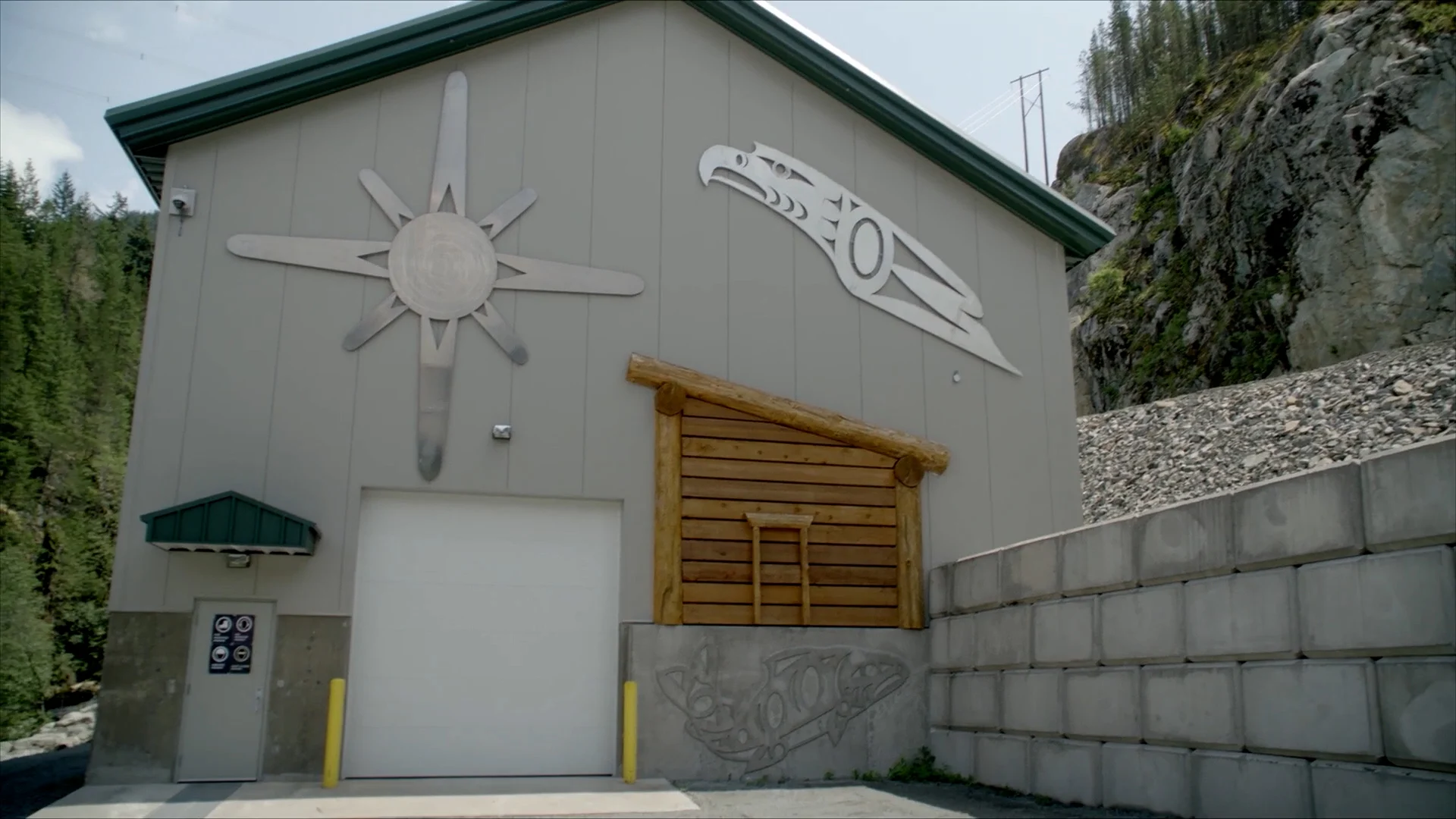
"The way of the future": Run-of-the-river projects generate clean energy in B.C.
Large-scale hydro plants can cause significant damage to local ecosystems, whereas run-of-the-river projects utilize existing waterways and gravity.
The shíshálh (Sechelt) Nation located on British Columbia’s south coast is surrounded by lush forests, steep mountains, and fast-flowing rivers.
Melina Laboucan-Massimo, one of Canada’s leading climate change advocates and the host of Power to the People, visited the nation to learn about the construction of the Narrows Inlet run-of-the-river hydro project.
Laboucan-Massimo met with Dionne Paul, a member of the Sechelt Nation and the executive of operations for her community. During a tour of the three reserves within the nation, Paul explained how population levels have changed over the past few centuries.
Sechelt Nation once had a population of approximately 25,000, but the impacts of European colonization — such as the introduction of diseases like smallpox and the residential school system — caused significant mortality. Today the nation consists of around 2,000 individuals, with 800-900 residing in the community.

Laboucan-Massimo and Paul on a canoe with members of the Sechelt Nation. (Power to the People)
The ocean, rivers, and mountains continue to ground the nation’s culture, which is why a run-of-the-river hydroelectric project was a perfect fit as a new energy source. The 33 MW hydro project was made possible through a partnership between Sechelt Nation and BluEarth Renewables.
“We have been here for thousands of years. We looked after our land, and nothing was ever destroyed. We don't agree with big dams that flood valleys. But BluEarth – great partnership with them — this is the way of the future,” said Randy Joe, project liaison for Sechelt Nation.
Another run-of-the-river hydro project operates in Squamish Nation, which was Laboucan-Massimo’s next stop during her trip on the West Coast.
“We like [when] people visiting our lands have an interest in our lands and resources and that they understand the importance of our connection to the land, our connections to the water, to the trees, to the wildlife,” Joshua Joseph, a councillor for Squamish Nation, explained to Laboucan-Massimo during her visit.

The Culliton Creek Hydro Project. (Power to the People)
Joseph helped spearhead the Culliton Creek Hydro Project, which is a 15 MW run-of-the-river hydroelectric power plant that generates revenue for the nation. The power plant was chosen because of its minimal impact on both terrestrial and aquatic ecosystems and was designed to represent a traditional long house.
Water from the creek travels into pipes and eventually spins turbines that are connected to a generator. The power produced is then sold to BC Hydro.
“The benefit is after 40 years, the Squamish Nation will be in full ownership. It's an incredible opportunity for our nation to one day own this beautiful project,” said Joseph.

The flowing river that generates energy at the Culliton Creek Hydro Project. (Power to the People)
“As somebody that comes from inland, it's always amazing to witness people's connection and history with the ocean. How reverent they are to the water. I think a lot of times we see water being desecrated and contaminated through resource extraction projects,” expressed Laboucan-Massimo.
“But with renewable energy initiatives, like run-of-the-river, I can see the way the water is still being respected and protected and not being contaminated. Pretty significant how water is being used continually, culturally, and also harnessing renewable energy technology to power their community.”
However, as promising as these run-of-the-river projects have proven to be in B.C., there will be less opportunity for them in the future following the approval of the Site C hydroelectric dam.
Watch the video above to learn more about how Indigenous communities in B.C. are spearheading renewable energy projects to generate electricity and revenue while maintaining the health and integrity of the environment.
Thumbnail image: Laboucan-Massimo on a tour of the Culliton Creek Hydro Project. (Power to the People)











